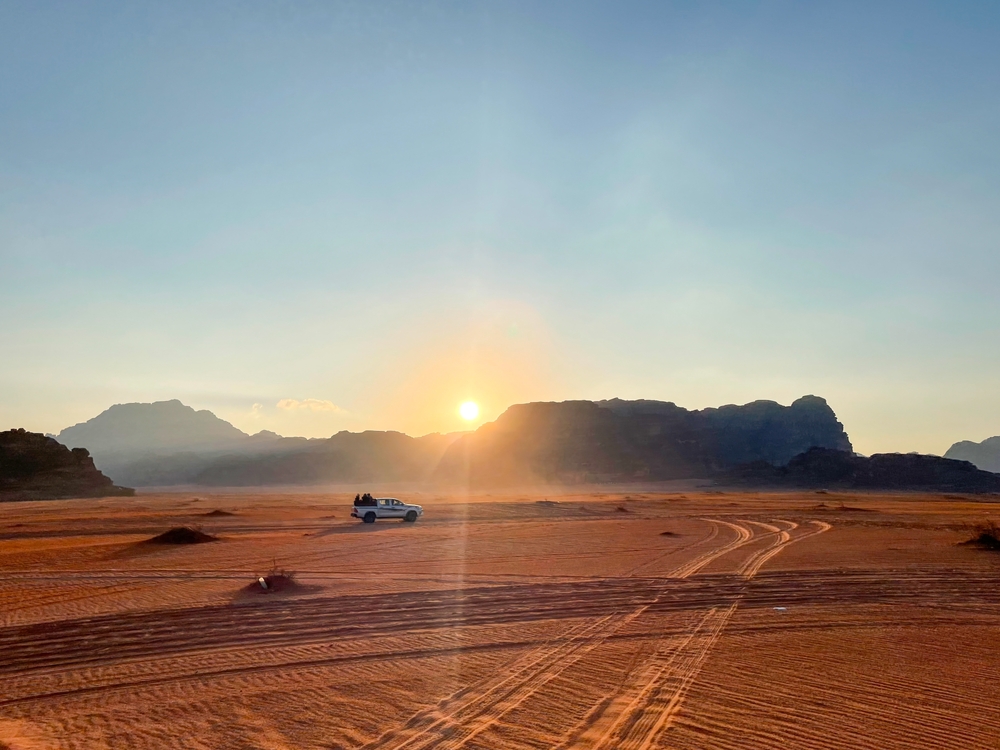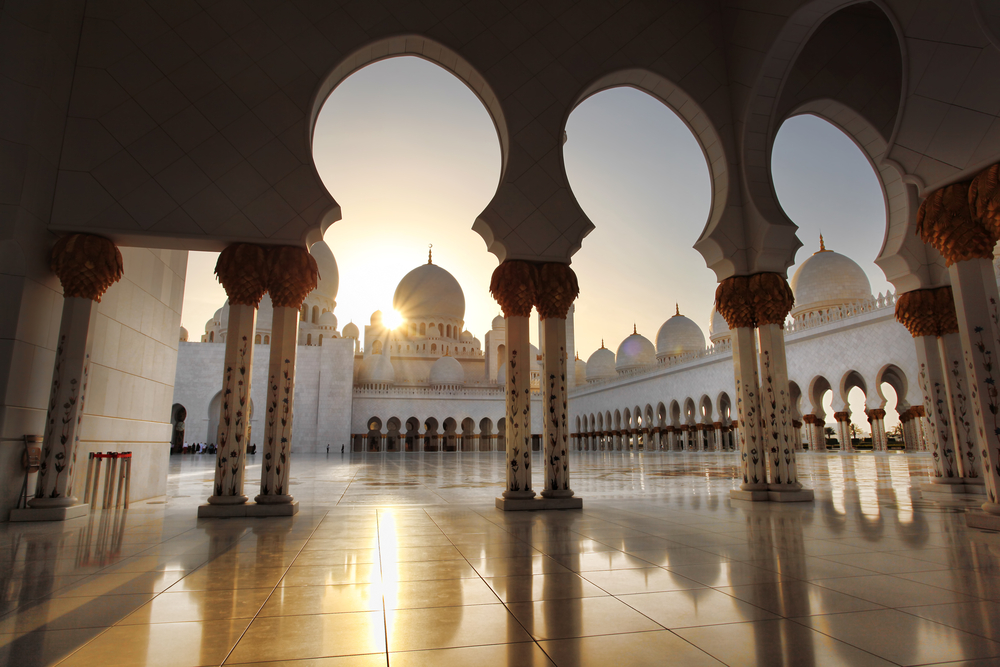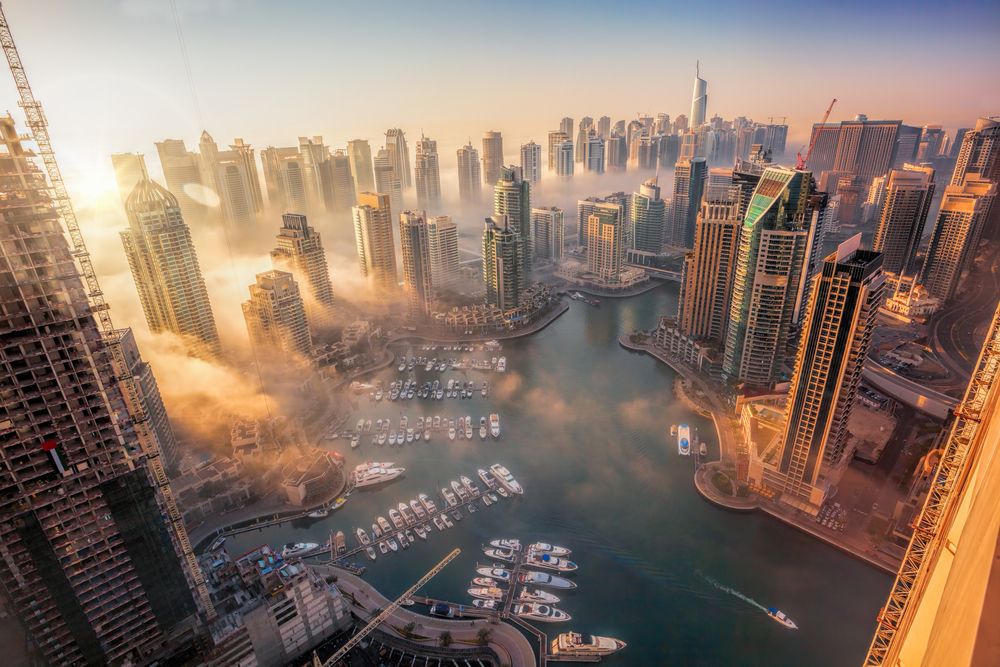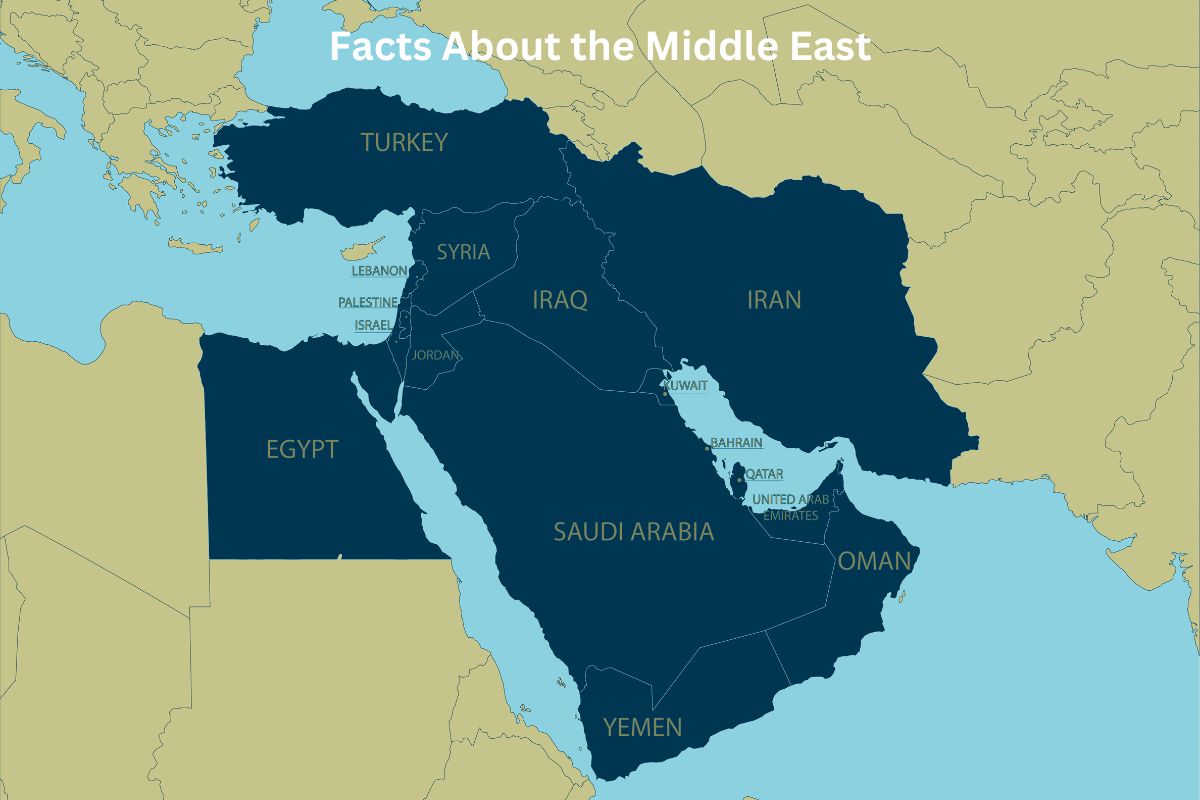The Middle East, situated at the crossroads of Asia, Africa, and Europe, is a region of immense cultural, historical, and geopolitical significance.
This diverse and complex area is home to a rich tapestry of cultures, languages, and religions, including the birthplace of Judaism, Christianity, and Islam.
It is renowned for its vast deserts, ancient trade routes, and UNESCO World Heritage Sites. At the same time, it grapples with challenges such as water scarcity and ongoing political conflicts.
The Middle East is also a hub of modern development, with rapidly growing cities and a culinary tradition that has left a global imprint. In this dynamic region, the past and the present intertwine, shaping the course of its future.
Middle East Facts
1. Geographically at the crossroads of Asia, Africa, and Europe
The Middle East is strategically located between three continents: Asia to the east, Africa to the south, and Europe to the west. This location has historically made it a crucial hub for trade, cultural exchange, and geopolitical influence.
Also Read: Middle East Timeline
It serves as a bridge between the Eastern and Western worlds, facilitating the movement of people, goods, and ideas across continents.

2. Diverse cultures and religions
The Middle East is incredibly diverse in terms of its cultures, languages, and religions. It is a mosaic of different ethnic groups and traditions.
Also Read: Arabs Facts
Major ethnic groups in the region include Arabs, Persians, Turks, Kurds, Jews, and various Christian and Muslim communities.
This diversity has led to a rich tapestry of cultural practices, art, and architecture that vary from one country to another.
3. Birthplace of Judaism, Christianity, and Islam
The Middle East is the historic birthplace of three of the world’s major monotheistic religions: Judaism, Christianity, and Islam.
Jerusalem, located in the Middle East, is a holy city for all three religions. The Western Wall, the Church of the Holy Sepulchre, and the Dome of the Rock are among the most sacred sites for Jews, Christians, and Muslims, respectively.
These religions have had a profound impact on the region’s history, culture, and geopolitics, and they continue to be central to the identity of many Middle Eastern countries and their people.

4. Rich ancient history
The Middle East is rich in cultural and historical significance, with ancient sites, artifacts, and traditions that date back millennia.
It is the birthplace of several ancient civilizations, including the Sumerians, Babylonians, and Pharaohs, whose legacies are preserved in archaeological sites and museums.
The region’s historical contributions to science, mathematics, medicine, and literature have left a lasting impact on human knowledge and culture.
It is a region where ancient history meets contemporary progress, and where both challenges and opportunities continue to shape its future.
5. Major oil-producing region
The Middle East is known for its significant oil reserves, making it a crucial player in the global energy industry. Countries like Saudi Arabia, Iran, Iraq, Kuwait, and the United Arab Emirates are some of the world’s largest oil producers.
The discovery of oil in the early 20th century transformed the economies of many Middle Eastern nations and brought substantial wealth. It also made the region a focal point of global geopolitics, with major powers seeking influence and control over oil resources.
6. Ongoing political and military conflicts
The Middle East has been a region of persistent political and military conflicts for many decades. These conflicts have often been driven by a combination of historical, religious, ethnic, and geopolitical factors.
Notable conflicts include the Israeli-Palestinian conflict, the Syrian Civil War, the Yemeni Civil War, and the Iran-Iraq War. These conflicts have had far-reaching humanitarian, social, and economic consequences for the region.

7. Arabic is the most widely spoken language
Arabic is the most widely spoken language in the Middle East. It serves as a unifying language for many people in the region, especially in Arab-majority countries.
While Arabic is the predominant language, there is also linguistic diversity in the Middle East, with languages like Persian (Farsi), Turkish, Kurdish, and Hebrew being spoken by significant populations.
The Arabic language has played a central role in preserving and transmitting the cultural and religious heritage of the region, particularly in the context of Islamic literature and scriptures.
8. Vast desert landscapes
The Middle East is known for its extensive desert landscapes, with the Arabian Desert being one of the most iconic. It covers large parts of Saudi Arabia, Yemen, Oman, the United Arab Emirates, and other Gulf countries.
Other significant deserts in the region include the Sahara Desert in North Africa and the Syrian Desert in western Asia.
These arid environments present unique challenges for water resources, agriculture, and habitation, but they also offer breathtaking natural beauty and have played a role in the history and culture of the region.

9. UNESCO World Heritage Sites
The Middle East is home to numerous UNESCO World Heritage Sites, reflecting its rich historical and cultural heritage.
One of the most famous is Petra in Jordan, an ancient city known for its rock-cut architecture. It was the capital of the Nabataean Kingdom and is often referred to as the “Rose City.”
Egypt’s Pyramids of Giza, the historic city of Yazd in Iran, and the ancient city of Palmyra in Syria are also among the region’s UNESCO-listed sites. These sites attract tourists and researchers from around the world.
10. Key trade routes in history
The Middle East has been a crossroads for trade for thousands of years, hosting important historical trade routes.
The Silk Road, which connected China to the Mediterranean, passed through the Middle East, facilitating the exchange of goods, cultures, and ideas between East and West.
The Incense Route, which connected Arabia to the Mediterranean, was another crucial trade network. It was named for the valuable incense and spices that were traded along this route.
11. Distinctive Middle Eastern cuisine
Middle Eastern cuisine is known for its unique flavors, herbs, and spices. It has made a significant impact on global gastronomy.
Popular Middle Eastern dishes include falafel (deep-fried chickpea or fava bean patties), shawarma (seasoned meat cooked on a vertical rotisserie), hummus (a creamy dip made from chickpeas), and baklava (a sweet pastry made of layers of filo dough, filled with nuts and honey).
The use of ingredients like olive oil, tahini, pomegranate, and a variety of aromatic spices like cumin, coriander, and sumac are characteristic of Middle Eastern cuisine.
12. Water scarcity issues
Many countries in the Middle East face significant water scarcity challenges due to the region’s arid and semi-arid climate.
The Tigris-Euphrates river system, which flows through countries like Iraq and Syria, is a vital water source for agriculture and daily life. The equitable distribution of water from these rivers has been a source of tension.
The Nile River, which flows through Egypt and Sudan, is another critical water source for the region. Issues related to water rights and access have been points of contention.
13. Rapidly developing modern cities.
The Middle East is home to several rapidly developing and modern cities that have seen significant economic growth and urbanization.
Dubai, in the United Arab Emirates, is known for its futuristic architecture, luxury shopping, and vibrant nightlife. It has become a major global business and tourism hub.
Riyadh, the capital of Saudi Arabia, has experienced urban expansion and modernization in recent years, with new infrastructure and cultural developments.
Doha, the capital of Qatar, has also seen significant growth and development, with its skyline featuring iconic skyscrapers and world-class facilities.
